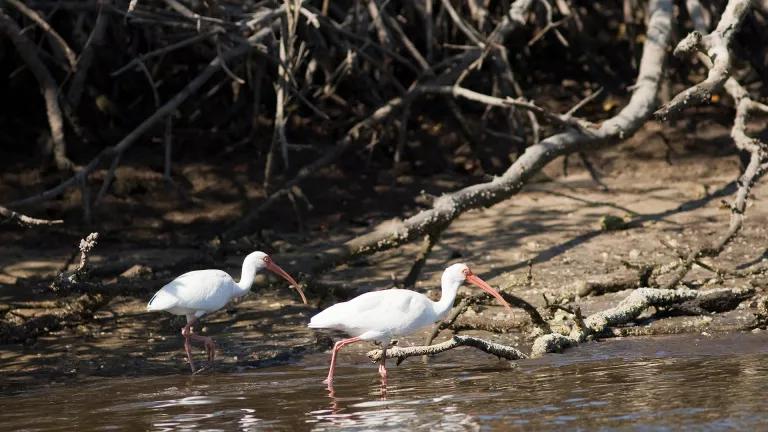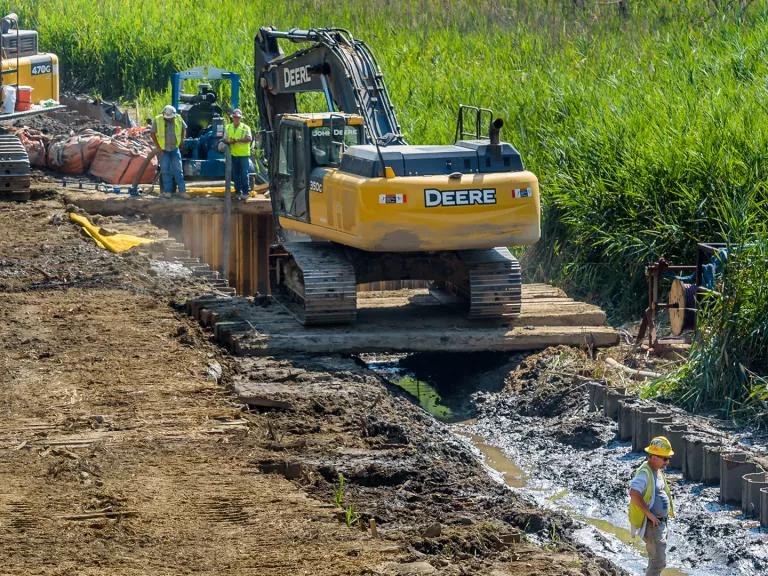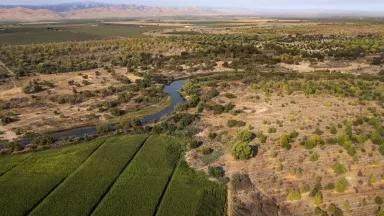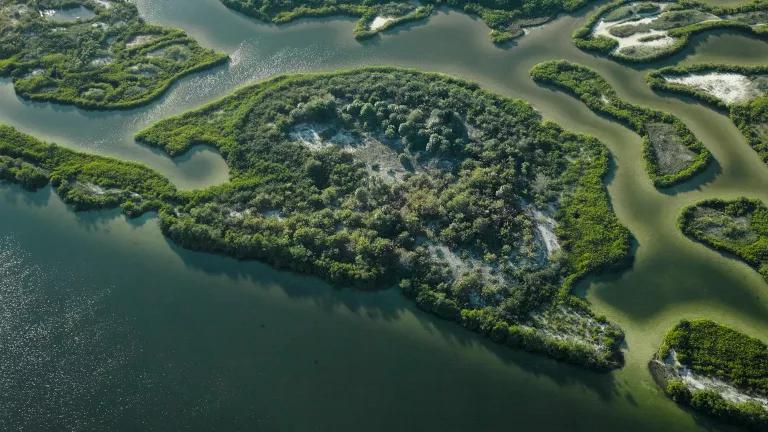Wetlands Are Imperiled—But the Clean Water Act Can Protect Them
The U.S. Environmental Protection Agency and Army Corps of Engineers need to use the full measure of their authority under the law to prevent wetland loss.

White ibis explore the mangroves at Fakahatchee Strand State Preserve in Florida
Tim Graham/Getty Images
Happy World Water Day! On this day and all the rest, I am grateful for wetlands—marshes, bogs, swamps, and other areas—because they are critical elements of aquatic ecosystems. As a recent survey and synthesis of the scientific literature—developed by NRDC and Point Blue Conservation Science—summarizes, wetlands provide numerous benefits to people and the environment. Wetlands filter pollution, provide critical habitat for aquatic life, and curb flooding (providing an estimated $1.2 to $2.9 trillion in flood protection nationwide). And, as this new analysis highlights, they are frequently sinks for greenhouse gases, making their conservation a priority for climate policy.
Despite their critical importance, wetlands are imperiled. Globally, around 85 percent of wetland area has been lost. In the continental United States, approximately 53 percent of wetland area that existed prior to European colonization has been lost and, of the remaining area, a national survey found that less than half is in "good" condition, while 32 percent is in "poor" condition.
One of the primary tools we have as a nation to protect and restore wetlands is the Clean Water Act. Wetlands covered by the act’s pollution control, prevention, and cleanup programs may not be filled in without a prior environmental review and a permit that is designed to minimize (and often mitigate) any damage. Unfortunately, key requirements of the Clean Water Act that protect many wetlands are under assault. As we explain in an issue paper that accompanies the scientific synthesis, the agencies that implement the Clean Water Act—the U.S. Environmental Protection Agency (EPA) and the U.S. Army Corps of Engineers—need to use the full measure of their authority under the law to prevent wetland loss and ensure ecological restoration for permitted wetland fills.
The agencies recently took an important step in that direction by officially repealing the Trump administration’s Navigable Waters Protection Rule, which we called the “Dirty Water Rule” because it removed federal protections for millions of miles of streams and tens of millions of acres of wetlands). The agencies then put in place a permanent policy that is more grounded in science and therefore better suited to sustaining the nation’s waters. Unfortunately, polluters and their political allies have attacked these modest rules in court and in Congress, and we’re anxiously awaiting a decision from the U.S. Supreme Court on a case in which anti–clean water parties have asked the Court to roll back protections, similar to the Trump administration’s radical Dirty Water Rule, or to take even more dramatic actions.
Beyond this recent regulation, though, we are still waiting for the Biden administration to deliver improved protections under the Clean Water Act for our critical wetlands. For instance, EPA has proposed—but has not finished—a regulation to replace a Trump administration rule that eviscerated state and tribal authority under the Clean Water Act to review and limit the harms that federally permitted projects (like hydro dams, pipelines, and wetland fills) can inflict on their waterbodies. This program is one of the principal tools that state wetland officials have to protect important wetlands, so it's important that the Biden administration finalize its proposed rule as soon as possible.

Construction of the Spectra AIM pipeline cuts through wetlands in Peekskill, NY
Erik McGregor/LightRocket via Getty Images
Similarly, the Army Corps of Engineers has not done nearly enough in this administration to protect wetlands. Indeed, it’s done very little. The Clean Water Act authorizes the Corps to permit activities that fill in water bodies—for example, construction and development, fossil fuel pipelines, highways, and mining projects—but the law also requires the Corps to abide by environmental guidelines in doing so and authorizes the Corps to consider the broader “public interest” when deciding whether to permit a discharge. The permitting guidelines demand special protection for wetlands, but the Corps in practice very rarely withholds approval of wetland-destroying projects. The Corps (and EPA, which exercises an oversight role for the Corps’s permitting program) must enhance its review of wetland-harming projects, refuse to permit projects that are not in the public interest, and demand far-improved environmental performance for those that do move forward.
Additionally, the act allows the Corps to issue fast-track “general” permits on a state, regional, or national level, but only if the permitted activities will result in minimal environmental harm. Although the vast majority of projects requiring Corps approval rely on these general permits, the Corps has done a poor job ensuring that they’re limited to minimally harmful projects. The Biden administration pledged to review and reconsider the dozens of nationwide permits on the books and assess whether they are consistent with the law and the administration’s climate, equity, and environmental goals, but the Corps has yet to propose any changes to these permits and has indicated it is only seriously considering changes to one: the infamous and illegal nationwide permit that fast-tracks pipeline projects. The Corps must re-evaluate its nationwide permits and follow the Clean Water Act’s directive to limit such permits to activities that cause no more than minimal harm to the environment.






